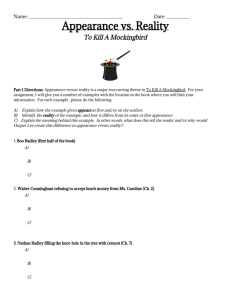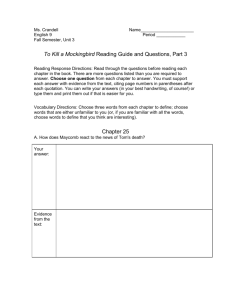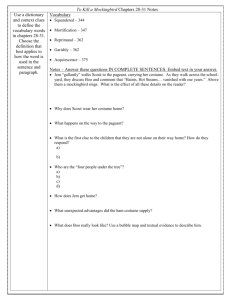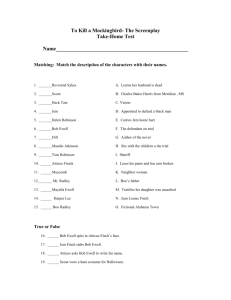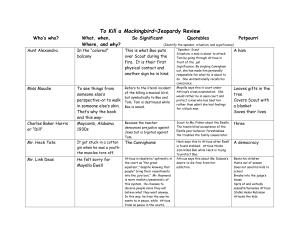Of Mice and Men Dialectical Journal Assignment
advertisement
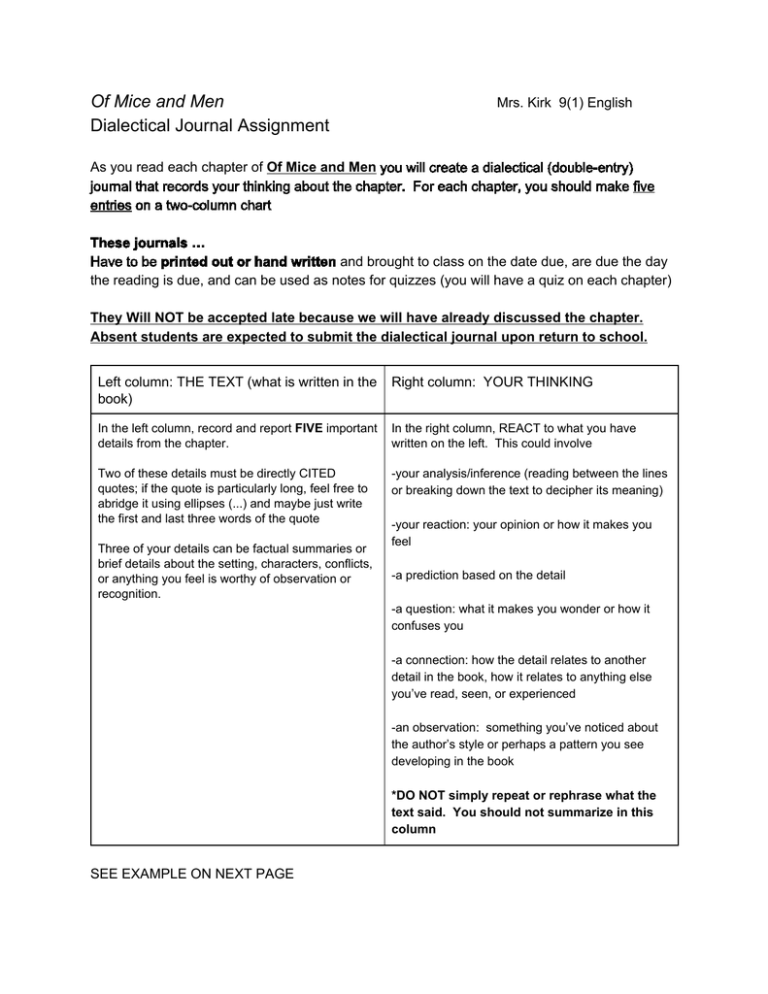
Of Mice and Men Dialectical Journal Assignment Mrs. Kirk 9(1) English As you read each chapter of Of Mice and Men you will create a dialectical (double­entry) journal that records your thinking about the chapter. For each chapter, you should make five entries on a two­column chart These journals … Have to be printed out or hand written and brought to class on the date due, are due the day the reading is due, and can be used as notes for quizzes (you will have a quiz on each chapter) They Will NOT be accepted late because we will have already discussed the chapter. Absent students are expected to submit the dialectical journal upon return to school. Left column: THE TEXT (what is written in the Right column: YOUR THINKING book) In the left column, record and report FIVE important details from the chapter. Two of these details must be directly CITED quotes; if the quote is particularly long, feel free to abridge it using ellipses (...) and maybe just write the first and last three words of the quote Three of your details can be factual summaries or brief details about the setting, characters, conflicts, or anything you feel is worthy of observation or recognition. SEE EXAMPLE ON NEXT PAGE In the right column, REACT to what you have written on the left. This could involve ­your analysis/inference (reading between the lines or breaking down the text to decipher its meaning) ­your reaction: your opinion or how it makes you feel ­a prediction based on the detail ­a question: what it makes you wonder or how it confuses you ­a connection: how the detail relates to another detail in the book, how it relates to anything else you’ve read, seen, or experienced ­an observation: something you’ve noticed about the author’s style or perhaps a pattern you see developing in the book *DO NOT simply repeat or rephrase what the text said. You should not summarize in this column Example Michelle Kirk To Kill a MockingbIrd Chapter 30 Dialectical Journal The TEXT My THINKING “If Atticus could blandly introduce me to Boo Radley at a time like this, well­­that was Atticus” (271). Funny­­Scout remarking on Atticus’s infamous composure and “dryness.” Despite a murder attempt and a visit from a man unseen for decades, Atticus still speaks in his even, courtroom tone Scout refers to Boo as “Mr. Arthur” and escorts him through the house, taking him to the “deep shadow” of the porch (272). This shows a complete turnaround from how Scout treated earlier “guests” in the novel­­like Walter Cunningham, whom she embarasses and humiliates. Scout is now being considerate of her guest’s feelings and placing herself in Boo’s shoes to make him feel comfortable. There are two knives mentioned: the kitchen knife in Mr. Ewell’s ribs and the switchblade that Mr. Tate says he took off a drunk man. I infer that both knives were involved in the attack: the switchblade was clearly the drunken Bob Ewell’s weapon and the kitchen knife was Boo’s. Tate takes the switchblade from the crime scene to protect Boo. He doesn’t say this aloud because he is doing something “corrupt”, though questionable ethical, in covering up the truth. “...dragging him with his shy ways into the limelight­­to me, that’s a sin” (276). Tate is referring to the shy Boo. I notice that Harper Lee has chosen the word “sin” to echo the book’s ultimate lesson, it’s a sin to kill a mockingbird. Atticus sincerely believed Jem killed Bob until Mr. Tate implied that Boo Radley was the children’s rescuer. I’m somewhat surprised that Atticus initially did not put two and two together about the truth of the attack. He was put into a tough position and had to choose between two of his principles: being honest and protecting the innocent. In this case, he chose to help Boo rather than uphold his unwavering honesty. This shows Atticus is unselfish. 15 points per chapter based on following directions and quality of thought ● Five entries per chapter (At least two should be quotes) ● Label each journal with your name and the chapter number ● Put each journal (new chapter) on a separate piece of paper ● Skip lines and write neatly ● Make sure YOUR thinking (right­hand column) is lined up next to the text (the left­hand column) ● DISPLAY your critical thinking (Right column is the most important!) ● No outside sources are permitted. This assignment is meant to make YOU look for what is important and to illustrate YOUR thinking.
